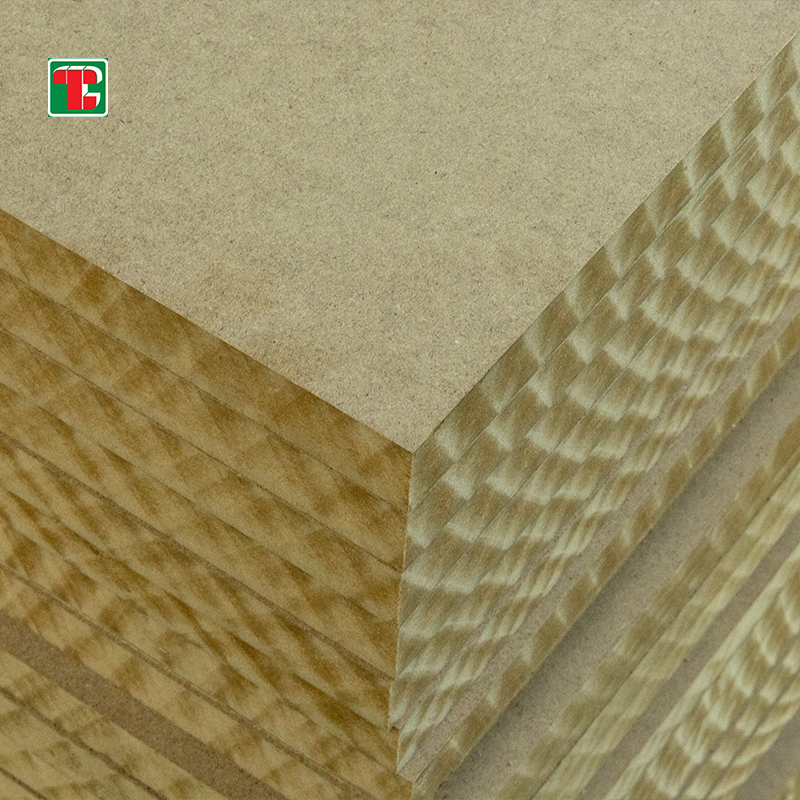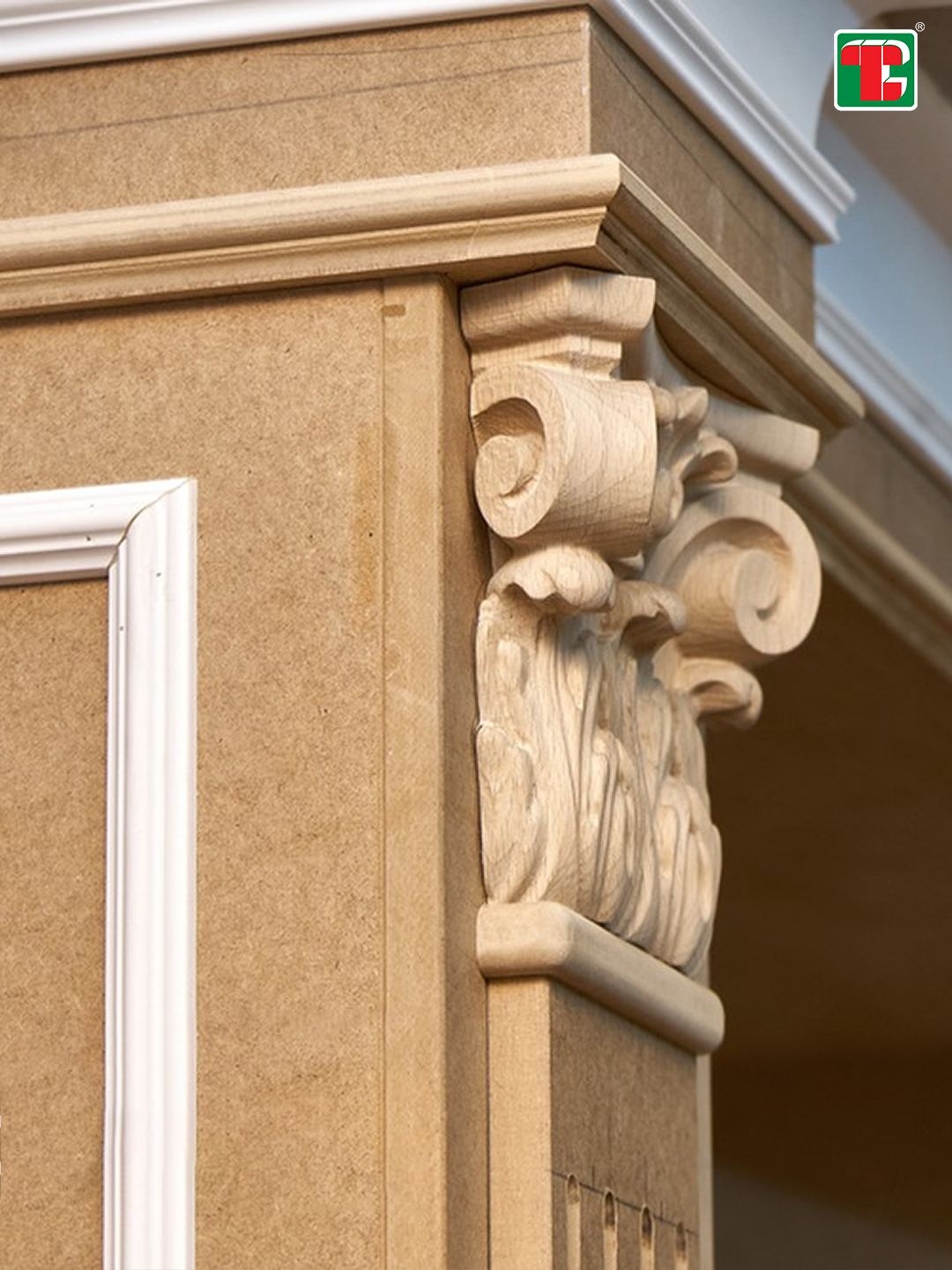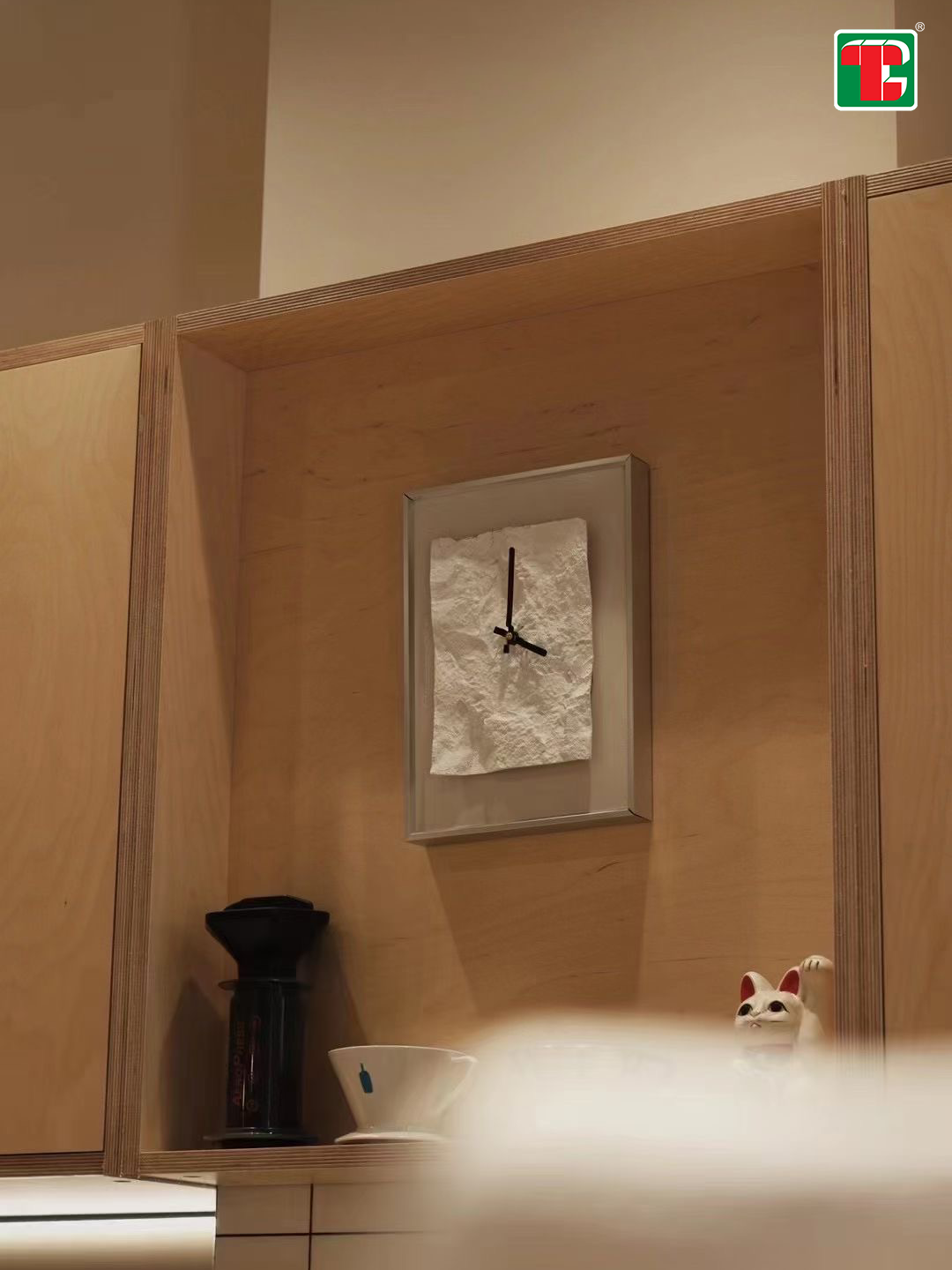Introduction:
In the world of construction and woodworking, the choice of materials can often make or break a project's success. Two commonly used building materials, Medium-Density Fiberboard (MDF) and plywood, stand out as versatile options, each with its unique set of characteristics. To make informed decisions for our projects, it's crucial to understand the fundamental differences between these materials. In this article, we will explore the world of MDF and plywood, shedding light on their properties, applications, and the importance of choosing the right one for your specific needs.
Section 1: Understanding the Materials
1.1. What Is MDF?
Medium-Density Fiberboard (MDF) is a versatile building material manufactured by combining wood fibers, resins, and wax through a high-temperature and high-pressure process. One of its defining features is its exceptionally smooth and uniform surface, making it an excellent choice for various applications.
For those who prioritize environmental and health considerations, there's also the option of No Added Formaldehyde (NAF) MDF. NAF MDF is crafted without the use of formaldehyde in its production, addressing concerns about off-gassing, and providing a more eco-friendly alternative.

1.2. What Is Plywood?
Plywood, in contrast to MDF, is a composite material composed of thin layers of wood, also known as plies, that are bonded together using adhesive. This layering technique imparts plywood with notable strength and flexibility. Additionally, plywood offers the advantage of utilizing various wood species for its top layer, allowing for a wide range of aesthetic choices based on color, grain, and wood characteristics.
Moreover, it's worth noting that plywood is available in options that do not contain formaldehyde in its construction, making it a suitable choice for those seeking a formaldehyde-free alternative.

Section 2: Uses of MDF
Medium-Density Fiberboard (MDF) finds its niche in a variety of applications, thanks to its unique characteristics.
MDF is particularly well-suited for interior use due to its smooth and uniform surface. However, it's essential to keep in mind that MDF has a sensitivity to moisture, making it a less than ideal choice for areas exposed to high humidity or direct water contact.
Its consistent and even surface makes MDF an excellent choice for finish work, including molding and trim, where a smooth, paintable finish is desired. This material is also commonly employed in the construction of cabinetry, furniture, and shelving units, where a uniform appearance is essential.
For those with a penchant for crafting and DIY projects, thin MDF proves to be an ideal material. It's easy to cut, producing consistent edges without the need for extensive sanding, making it a favorite for those who enjoy creating signs, silhouettes, and decorative items with precision

Section 3: Uses of Plywood
Plywood stands as a versatile building material, catering to a wide array of applications.
One of its primary uses is in the crafting of cabinets and furniture. Plywood's inherent strength and flexibility make it an excellent choice for constructing durable and functional pieces of furniture. Additionally, its capability to support a variety of wood species on the top layer allows for the creation of visually appealing cabinets and furniture with distinct wood grain appearances.
Plywood also finds its place in the realm of wall paneling, offering a seamless and attractive finish to interior spaces. Its smooth and appealing surface can be a fantastic choice for adding an aesthetic touch to walls.
The versatility of plywood extends to the construction of boxes and other storage solutions, where its robustness and structural stability ensure the longevity of the end product. Moreover, it is frequently employed in the creation of audio speakers and false ceiling beams, highlighting its adaptability for various applications.
For those who appreciate the natural beauty of wood, plywood presents an opportunity to stain the material, bringing out its distinct grain patterns and characteristics. This staining ability sets it apart from other materials like MDF, providing an option for those who prefer the rich, natural appearance of wood in their projects.
Lastly, plywood is an excellent choice for outdoor projects, as it is more resistant to water and moisture compared to MDF. It maintains its structural integrity even when exposed to temperature extremes, making it an ideal material for constructions intended to withstand the elements.

Section 4: Ease of Use
4.1. MDF
When it comes to working with Medium-Density Fiberboard (MDF), several key considerations set it apart from other materials, such as plywood.
MDF is notably heavier than plywood, which can be a crucial factor in projects where weight is a concern. However, despite its weight, MDF is generally less rigid than plywood. This characteristic should be considered when planning structural elements of your project.
MDF tends to produce more sawdust when cut compared to plywood. This is an essential point for those working with MDF, as it necessitates operating in a well-ventilated area and wearing protective gear like a respirator and goggles to ensure safety and health.
On the bright side, MDF is relatively easy to cut, and it excels in projects where intricate or detailed cuts are required. Its lack of grain makes it resistant to splintering and cracking along the edges, making it a preferred choice for crafting and woodworking projects.
It's essential to bear in mind that MDF may require edge finishing to achieve a polished look, as its cut edges are not as neat as plywood. So, when considering MDF, be prepared for additional steps to ensure a refined final appearance in your projects.
4.2. Plywood
Plywood, while a versatile and robust building material, comes with its own set of characteristics and considerations that differ from MDF.
One key aspect to note when working with plywood is the need for edge finishing. The edges of plywood are composed of layers, and to achieve a polished and professional appearance, edge finishing is typically required. This can involve the application of edge banding or molding to cover and protect the exposed edges of the plywood, ensuring a neat and clean finish.
Plywood, due to its stacked construction, is more prone to splintering, especially along the edges. This means that when cutting or handling plywood, care must be taken to prevent splinters or rough edges. Fortunately, various techniques can be employed to mitigate this risk, and with proper precautions, plywood can be handled without issues.
One of the distinct advantages of plywood is its suitability for staining. Plywood offers a natural wood-like appearance with its grain and finish, making it a great candidate for staining projects. Staining plywood allows you to showcase the wood's natural beauty, giving your projects an authentic and warm aesthetic.
Moreover, plywood excels in its ability to anchor screws securely. When compared to MDF, plywood provides superior screw-holding capabilities. This quality makes it a preferred choice for applications where stability and the ability to hold fasteners are essential, such as projects involving hinges or heavy loads.
Section 5: Painting vs. Staining
The choice between painting and staining often depends on the material being used. In the case of MDF and plywood, their surface characteristics play a significant role in determining the most suitable finishing method.
MDF's smooth and uniform surface makes it an ideal candidate for painting. The even texture of MDF allows paint to adhere seamlessly, resulting in a polished and consistent finish. However, to achieve the best results, especially in terms of durability and coverage, using an oil-based primer before painting MDF is highly recommended. This preparation step ensures that the paint bonds effectively to the surface, creating a long-lasting and attractive appearance.
Plywood, on the other hand, shines when it comes to staining. Plywood's natural wood-like grain and finish make it a prime choice for those who wish to enhance and showcase the wood's inherent beauty. Staining plywood allows the unique characteristics of the wood to come to the forefront, resulting in a warm and authentic aesthetic. This option is particularly appealing for those who appreciate the rich, organic look of wood in their projects.
In summary, the decision between painting and staining largely hinges on the surface characteristics of MDF and plywood. MDF is well-suited for painting, especially when accompanied by an oil-based primer, while plywood's natural grain and finish make it an excellent choice for staining, providing a more authentic and visually appealing result.
Section 6: Outdoor Use
When it comes to outdoor projects, the choice between MDF and plywood can significantly impact the durability and longevity of your creations.
Plywood emerges as the superior choice for outdoor applications due to its natural resistance to water, warping, and swelling. Plywood's layered construction and the types of adhesive used in its manufacturing make it inherently more resilient in outdoor conditions. It can withstand exposure to moisture, rain, and other environmental factors without compromising its structural integrity.
On the other hand, MDF is not well-suited for outdoor use. Its sensitivity to moisture and its tendency to absorb water make it highly vulnerable to water damage in outdoor conditions. When exposed to rain or humidity, MDF can swell, warp, and ultimately deteriorate, rendering it unsuitable for long-term use in exterior settings.
In summary, when planning outdoor projects, plywood is the preferred choice, offering the necessary resistance to water, warping, and swelling that ensures your creations stand the test of time in various weather conditions. MDF, in contrast, should be reserved for indoor applications where it can truly shine.
Section 7: Additional Considerations
When deciding between MDF and plywood, several additional factors should be taken into account to make an informed choice for your project.
Cost-effectiveness plays a significant role in the decision-making process. Generally, MDF is a more budget-friendly option than plywood. Therefore, if your project is sensitive to budget constraints, MDF may win the cost-efficiency battle. However, it's essential to balance this cost consideration with the specific requirements of your project to ensure you're not compromising on other critical aspects.
Environmental concerns are increasingly important in today's world. If sustainability and health are paramount in your decision-making, be sure to explore options for environmentally friendly materials. Both MDF and plywood can be manufactured with reduced environmental impact, such as NAF (No Added Formaldehyde) versions. Considering these options aligns your project with eco-conscious choices.
To enhance the practicality of this article, consider including project-specific photos and customization options. Visual aids can provide readers with real-world examples of how MDF and plywood are used in different contexts. Customization options can help readers tailor their material choice to their specific project needs, ensuring a more personalized and informed decision-making process.
By considering these additional factors, you can make the best choice for your project, taking into account budget, environmental concerns, and the unique characteristics of MDF and plywood.
Conclusion:
In conclusion, the comparison between MDF and plywood reveals distinct characteristics that significantly influence their suitability for various projects. To summarize:
MDF, with its smooth and uniform surface, is an excellent choice for interior projects that do not require exposure to moisture. It excels in finish work, cabinetry, furniture, and crafting, making it the preferred material for those seeking a sleek and paintable finish.
Plywood, with its strength and flexibility, finds its place in a wide array of applications, including cabinets, furniture, wall paneling, and outdoor projects. Its ability to showcase different wood grain appearances, stain beautifully, and anchor screws securely makes it a versatile option for various projects.
Understanding these differences is crucial to optimizing material choices for specific projects. Whether you prioritize cost-effectiveness, environmental concerns, or the demands of outdoor use, making an informed decision ensures the success and longevity of your creations. By considering the unique properties of MDF and plywood, you can select the right material to bring your projects to life, meeting both your functional and aesthetic requirements.
Post time: Nov-08-2023







